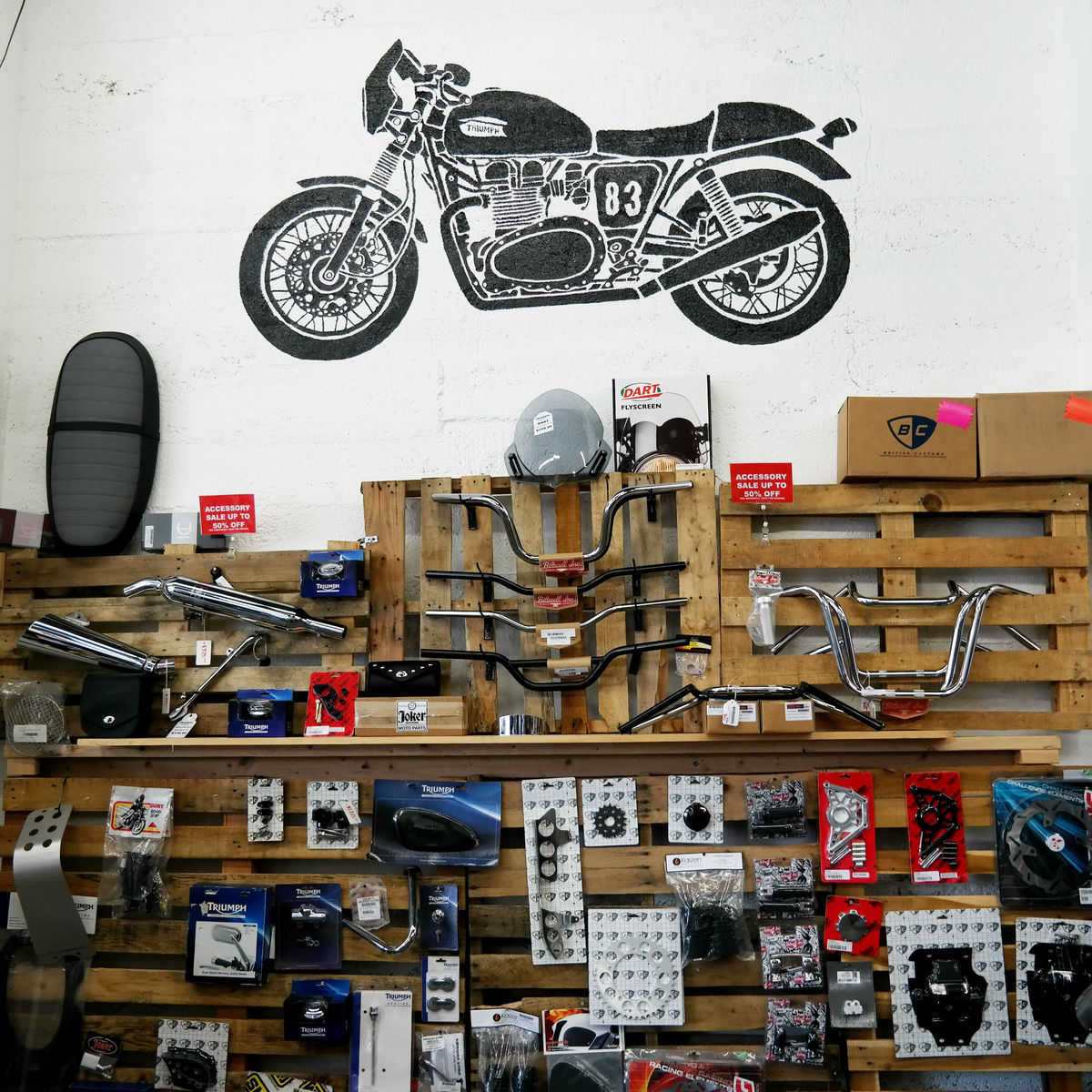Your Go-To Motorbike Shop for High Quality Parts and Accessories
Your Go-To Motorbike Shop for High Quality Parts and Accessories
Blog Article
Understanding Motorbike Gears: Exactly How to Optimize Your Riding Experience
In the world of motorcycling, mastering the art of gear adjustment is essential for enhancing your riding performance. Effectively utilizing and understanding bike gears can substantially affect control, acceleration, and fuel effectiveness, transforming an ordinary ride into a smooth, electrifying trip. By including precise shift timing and adjusting equipment option to numerous road conditions, motorcyclists can guarantee ideal engine performance and security. The subtleties of clutch control, throttle coordination, and equipment auto mechanics beckon a much deeper exploration, guaranteeing to unlock the full capacity of your device. Exactly how can these techniques be used to absolutely enhance your riding experience?
Comprehending Gear Mechanics
At the core of bike characteristics, equipment mechanics play a crucial duty in converting engine power into activity, eventually dictating rate and control. The equipment ratios, meticulously designed, establish the relationship in between engine revolutions and wheel turns, impacting velocity and gas efficiency.
Understanding equipment technicians begins with identifying the value of the transmission, which houses multiple equipments of varying sizes. These equipments interact through a procedure referred to as meshing, where teeth of various equipments engage to send power. The precision of this communication is crucial; any kind of misalignment or damages can bring about inefficient power transfer, impeding efficiency. In addition, the plan and size of equipments affect the motorcycle's capacity to manage different lots and rates.
Additionally, the idea of gear shifting is essential to making best use of performance. Smooth and timely changes make sure that the engine operates within its optimum power band, stopping unnecessary pressure and improving long life (mx gear nz). By comprehending these mechanical ins and outs, bikers can accomplish a harmonious mix of performance, control, and power, raising their riding experience
Timing Your Shifts
Shift timing mastery is vital for enhancing motorcycle performance and enhancing the riding experience. Properly timed changes make sure that the engine operates within its optimum power band, which is vital for preserving control, accomplishing smooth velocity, and making sure the longevity of the bike. Bikers must establish an intuitive sense of when to change gears, which entails recognizing the partnership between engine revolutions per minute (RPM) and rate.
To understand change timing, pay very close attention to the engine's noise and really feel, as these supply vital hints about when to alter equipments. When the engine comes close to the top range of its power band without reaching the redline, the suitable change factor usually happens - mx parts nz. Shifting prematurely can lead to a lack of power, while shifting far too late may cause unnecessary engine pressure
Additionally, roadway problems and riding style impact change timing. In contrast, throughout freeway riding, fewer shifts at greater speeds can be more proper.
Enhancing Gas Efficiency
While grasping motorcycle gears is essential for performance, improving fuel performance is just as crucial for both economic and environmental factors. Optimal fuel usage look at this website not just minimizes functional expenses yet additionally minimizes the environmental footprint of riding. To accomplish this, one need to recognize the elaborate connection in between gear choice and engine efficiency.
Riding in a higher gear at lower rates can lead to engine lugging, which is harmful to both fuel economy and engine wellness. Conversely, riding in lower gears at high rates results in unneeded gas usage.
Furthermore, regular upkeep plays a crucial duty in gas performance. Ensuring that the motorcycle is well-tuned, with clean air filters and appropriately blew up tires, can minimize and improve the rules of aerodynamics gas waste. Furthermore, taking on a riding design that accepts gradual velocity and smooth slowdown can contribute to better gas economic situation.

Strategies for Smooth Transitions
Attaining smooth equipment changes is fundamental to enhancing the riding experience and making certain the durability of a bike's transmission system. Proper gear moving not only adds to a smooth adventure yet additionally minimizes damage on the mechanical elements. To master the art of smooth transitions, Visit Website riders should concentrate on a few key strategies.

Second of all, clutch control plays an essential role. Engaging and disengaging the clutch smoothly requires method. The clutch bar should be released gradually, permitting a seamless transfer of power from the engine to the wheels without causing a shock or sudden activity.

Adapting to Roadway Conditions
Navigating diverse roadway problems is a crucial skill for any type of motorcyclist intending to preserve control and safety. Whether you're riding on wet surface areas, crushed rock roadways, or browsing sharp turns, your ability to adjust your gear use and riding method is vital. Understanding just how to readjust your gears properly can dramatically influence traction and stability, guaranteeing a much safer journey.
In contrast, when riding on crushed rock or irregular surface, reduced gears are better. Reduced gears offer better control and allow you to respond even more quickly to unforeseen changes in the roadway surface area.
Sharp curves require specific gear management to stabilize rate and control. Downshifting before going into a contour can aid maintain energy while ensuring the motorcycle stays secure throughout the turn. Constant practice in varied problems enhances your ability to anticipate and react to modifications in roadway texture and incline.
Final Thought
Grasping bike equipments significantly improves the riding experience by improving gas, control, and acceleration effectiveness. A thorough understanding of equipment auto mechanics and accurate change visit the site timing guarantees the engine operates within its optimal power band, while smooth changes through efficient clutch and throttle sychronisation boost comfort and performance. Adapting gear option to various road problems, such as using greater equipments on damp surfaces and reduced gears on crushed rock, additional boosts handling and safety and security. Inevitably, these abilities boost the general journey.
Understanding gear auto mechanics begins with recognizing the importance of the transmission, which houses numerous gears of varying sizes. These gears interact via a procedure recognized as meshing, where teeth of various gears engage to send power (mx gear nz). Gentle adjustments to the throttle throughout equipment shifts can prevent jerky activities and preserve a constant riding pace
Whether you're riding on damp surfaces, gravel roads, or browsing sharp turns, your capability to adapt your equipment usage and riding method is vital. Adapting gear selection to numerous road conditions, such as using higher equipments on damp surface areas and lower gears on crushed rock, more boosts handling and security.
Report this page